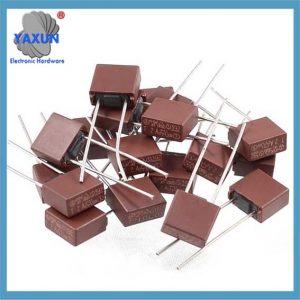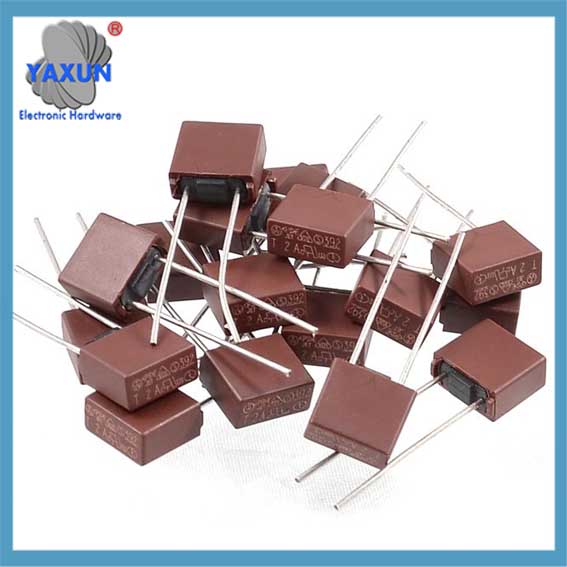Kategorije izdelkov
- Termični odklopnik 20
- Nosilec škatle z varovalkami 36
- Temperaturni senzor 67
- Termično stikalo 64
- Avtomobilska varovalka 19
- Pritrjene varovalke 7
- toplotna varovalka 32
- površinsko nameščene varovalke 12
- termistor 22
- Nosilec varovalk za PCB 27
- Kabelski snop 6
- Držala rezilnih varovalk 17
- termostat 46
- Električna varovalka 14
Oznake izdelkov
Črna / Miniaturne varovalke tipa Rdeči kvadrat s časovnim zamikom, vgrajene z mikro DIP
Črno rdeč kvadratni tip počasi pihajo radialne svinčeve mikro varovalke
Opis kvadratnega tipa počasi mikro varovalke s počasnim pihanjem:
Nazivna napetost: 250V
Material: Baza in pokrovček: Črna termoplastična, Zatič: Zložena zlitina
Certifikat : CUL、UL
AC adapter tok:2.5 Amperi
Znamka:Baomain
Napetost:250 Voltov
Material:svinec
Specifikacija:Spoznal
O tem predmetu
Ime izdelka : Mikro varovalka; Vrsta vodi : Radialno
Nazivna moč : 250V, 2.5A (T2.5A); Prelomna zmogljivost : 50A (250V AC); Časovni zamik : 2.5A
Velikost telesa : 8 x 7 x 4mm/ 0,31″ x 0,27″ x 0,16″(L*w*t)
Velikosti : 0.5 x 19 mm/ 0,2″ x 0,75″ (D*L)
Teža : 10g; Vsebina paketa : 20 X mikro varovalka
 DIP MINIATURANSKI MINIATURNI VIKINDER SPORABLJUČEN MICRO FUSE 250V RDEČA |
 uxcell Square Type Slow Blow Radial Lead Micro Varovalka za elektronske dele PCB LCD Popravilo Zamenjava |
 Črna / Mikro DIP varovalka s časovnim zamikom rdečega kvadrata |
① Miniaturni kvadrat, nameščen na poti, z velikostmi 8*8*4 mm, 8.5*8mm, 8.5*8*4mm; Trenutni razpon od 50mA-6,3a 125V/250V;;
Modeli vključujejo: AR5\AP5\AMF\AF\372\382\370\392\2000\2010\MEF\MET\MSF\MST, itd.
② Miniaturni kvadrat, nameščen na potop, lahko razdelimo na hiter in počasen udarec glede na zmogljivost varovalk.
③ po standardih, Lahko ga razdelimo na ameriške in evropske standarde, in pridobljena potrdila so: UL\VDE\SEMKO\CUL\CCC\EK\PSE, itd.
Vpliv temperature delovnega okolja na življenjsko dobo varovalk:
Prekomerna temperatura okolice bo poškodovala življenjsko dobo varovalke. Za časovni zamud (počasi) varovalke, kot je tirna kroglica, kositer se začne razmikati v kovinsko žico, ko je temperatura približno 160 ℃ (150~ 170 ℃). Temperatura, pri kateri je primerljiv element (kovinska žica) hitrega varovalke začne bolj silovito oksidacijo približno 200 ℃ (175~ 225 ℃). Z oksidacijo varovalke od zunaj do znotraj, Več difuzij, Utrujenost s toplotnim stresom, itd., Življenje varovalke se bo postopoma skrajšalo. Zato, Priporočljivo je, da varovalka s časovnim zamudo ne sme delovati dolgo nad 150 ℃, In hitra varovalka ne sme dolgo delovati nad 175 ~ 225 ℃.
Vpliv impulznega toka na življenjsko dobo varovalke:
Nenehni udarni udarci bodo povzročili toplotne cikle, ki bo povzročil difuzijo, oksidacija, termični stres, itd. varovalke, in ga celo pospeši. Varovalka se bo postopoma starala s povečanjem energije impulza in številomkrat. Življenjska doba udarca varovalke je odvisna od odstotka impulza i2t do lastne varovalke I2t. običajno, mora biti manj kot 20[%], tako da lahko varovalka zdrži več kot 100,000 vplivi.
Na primer objemka cevi v stiku z varovalko, in območje dolžine in prereza povezovalne žice. Kontaktna odpornost med varovalko in cevjo objemka je velika, kar škoduje življenju. Standard UL določa, da je kontaktna upor med varovalko in cevjo objemko med testom manjša od 3MΩ. Ko je kontaktna odpornost velika, Objemka cevi ne razprši toplote, ampak ustvarja toploto in jo prenaša na varovalko.

Velikost MTS 8x4 mm Čas zaostajanja radialne svinčeve mikro varovalke
Kontaktirajte nas
Čakam na vašo e-pošto, vam bomo odgovorili v roku 12 ure z dragocenimi informacijami, ki jih potrebujete.
 English
English العربية
العربية Български
Български 粤语
粤语 中文(简体)
中文(简体) 中文(漢字)
中文(漢字) Nederlands
Nederlands Suomi
Suomi Français
Français Deutsch
Deutsch Ελληνικά
Ελληνικά Magyar
Magyar Italiano
Italiano 日本語
日本語 한국어
한국어 Polski
Polski Português
Português Română
Română Русский
Русский Slovenščina
Slovenščina Español
Español Svenska
Svenska ภาษาไทย
ภาษาไทย Türkçe
Türkçe Tiếng Việt
Tiếng Việt



